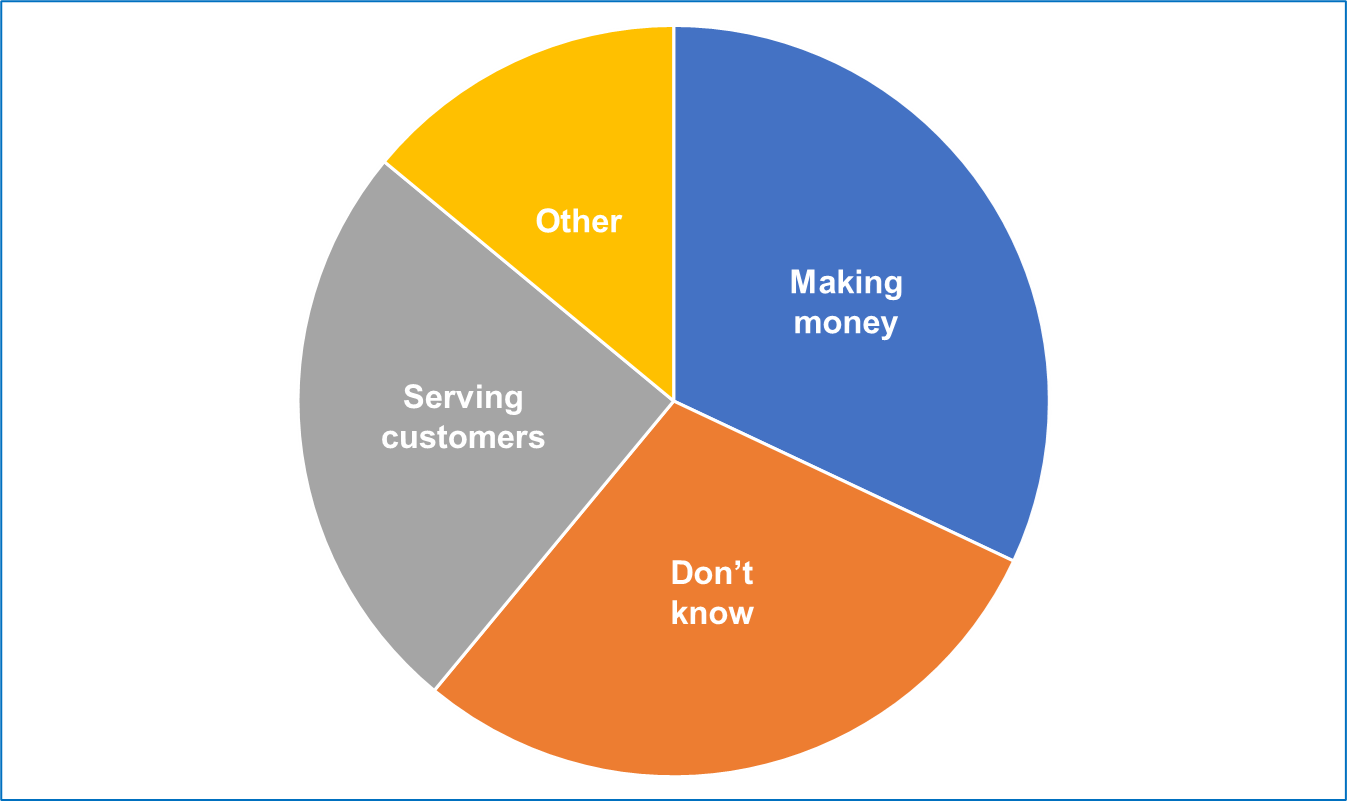
Whether your company delivers electricity or natural gas, your customers’ bills have shot up, which damages your utility’s brand. Analytically, we all understand why bills have shot up: Natural gas costs have skyrocketed. Colder weather has driven up customer usage. Inflation. Supply chain. The costs of building out or replacing your infrastructure.
Heck, even water provider’s bills have risen, for various reasons.
All that is well and good, and certainly understandable. The question is, what is your utility doing to help its customers and communities who have been hit with sky-high bills this winter.
High Utility Bills Draw Media Attention

In the metropolitan Denver area, electric and gas bills have risen so far and so fast that our utility provider, Xcel Energy, has become a hobby for one local TV news reporter, Marshall Zelinger (right) of the NBC affiliate station 9News. Marshall is an award-winning reporter who has a knack for distilling complex topics into easily digestible two-minute pieces. In a prior subscriber exclusive, I summarized a talk he gave to a local oil and gas group where he pleaded for greater clarity in their communications.
I stopped counting after Marshall did about 10 nightly segments on energy bills and Xcel Energy over January and February. My take: He was conducting a proctology exam with a chain saw. Yeah, that hurt.
There were one or two segments where I thought populist rage may have overwhelmed Marshall’s normal even-handedness. But the station ran segment after segment because of the large number of angry comments it received from viewers. The content for this particular news show is heavily driven by viewer feedback. And viewers were really upset!
Xcel Energy officials had a significant on-screen part on only a few of those segments, and very little of those comments focused on customers. Other story segments featured angry customers on Zoom video calls, officials from the state public utility commission, and Governor Jared Polis urging regulators (whom he appoints) and lawmakers (where his party, the Democrats, have large majorities) to take action to bring down the utility’s bills.
That part of the story will take a while to unfold, and the early prospects don’t appear promising for Xcel Energy. That’s unfortunate because I know several people who work there.
 How to Prevent Your Utility’s Brand from Becoming Toxic
How to Prevent Your Utility’s Brand from Becoming Toxic
A few of the segments mentioned Xcel’s promise that upcoming customer bills would decline in March and April because the cost of gas has come down. But the sharp and rapid increase in customer bills has already seriously damaged the company’s brand.
Worse, I’m a customer who pays attention to energy issues, and I don’t recall getting much advance warning from the company about rising gas costs. Here’s what we received in an email from Xcel a couple of weeks after 9News started running its series on Xcel:
We know bills can be stressful, and the increase in natural gas prices has put a strain on budgets. The good news is that natural gas prices are going to be lower in February and March than originally anticipated and 100% of these savings will be passed on to you over the next few months. This change means that residential natural gas bills are expected to be about 25% lower in February than last November. We still recommend taking steps to conserve energy when possible.
We also understand it may be difficult to cut back on energy usage, which is why we offer payment and energy assistance programs.
This was particularly irritating because the utility sent customers an email in December advising us that it had filed a request to increase electric rates that would take effect in late 2023. All of this may tell you all you need to know about the company’s customer communications.
I have blogged several times on how your utility’s brand could be either a safety net cushioning a utility fall or an anchor dragging it down. Like here And here. And here.
 The best way to cushion your fall, or better yet prevent one, is to build your safety net before you need it.
The best way to cushion your fall, or better yet prevent one, is to build your safety net before you need it.
It’s not complicated. But it’s a truism that too many utilities overlook. President John F. Kennedy once said, “The best time to repair the roof is when the sun is shining.” Two thousand years earlier, the Biblical story of Moses showed the importance of building a boat before it started raining.
Communications Tip of the Month: A brand is nothing more than a bundle of attributes that show what you stand for and that are repeatedly shown and crisply stated to customers. What customers don’t know can hurt your utility — usually when you can least afford the hit. Deeds, and frequent informative customer communications, are more important than splashy ad campaigns!
Start with the Basics: What Do Your Customers Know About Your Brand?
Xcel Energy’s current troubles reminded me of a presentation I saw last November at an American Public Power Association (APPA) conference. Delivered by Constance Anderson, communications division manager at Turlock Irrigation District (TID) in California, the talk concerned an evergreen topic — how to keep your brand fresh.
Although most of Constance’s talk had particular application to community-owned utilities, like members of APPA, her broader points apply to shareholder-owned utilities as well as electric cooperatives: the need to repeatedly show, and then crisply state, what you stand for. That’s all branding is, no matter who owns your enterprise.
Several years before Constance’s talk, the APPA, of which I am an associate member, conducted market research into customer perceptions of the public power utilities that served them and that customers owned. Only about one in five (20%) knew they were served by a public power utility. That set off alarm bells within APPA and its members, as well it should. Public power utilities believe their community ownership is a distinction with an important difference. But if nearly 80% of customers served by public power utilities were unaware of that, what else didn’t they know?
Turns out, a lot. The pie chart below summarizes what those public power customers thought motivated the utility that served them. Roughly four in 10 said their community-owned utility existed to make money — the exact opposite of why public power utilities exist.

APPA disseminated the market research as a wake-up call for its members on the need to continually remind their customer-owners that they were, in fact, owners of their utility. And ownership conveyed certain rights and prerogatives (just like with shareholder-owned utilities).
How TID Addressed Brand Unawareness
So, back to Constance Anderson. Her utility, TID, provides electricity and irrigation water services to customers in the central valley of California. For years before APPA conducted its market research, TID had been asking its customers if they knew that they owned their utility. Sadly, this was unknown by over half of residential customers, and almost 40% of commercial customers.
TID realized it needed to find ways to better connect with its customer-owners. They named their campaign “We Are TID” and established three goals:
- To increase customer awareness of TID’s community-owned status
- To Illustrate the diverse customer base that makes up TID
- To build goodwill in the community
Through the entire campaign using a variety of platforms, TID emphasized a consistent set of key messages about what community ownership means to customer-owners, including:
- Lower prices
- Local decision-making
- Reliability
- Providing Community Support — Our role as Trusted Partner
- Showing a majority of TID employees live within our service area
The Results
It worked! At the November 2022 APPA conference, Constance detailed the results showing a significant decline in residential customers who were unaware that TID was a community-owned utility. Measurable, but less significant, declines were reported among the utility’s commercial customers (below).

The Takeaway: Get to Know Your Customers Now
Xcel Energy serves about 5.8 million customers in eight states. TID, by contrast, provides electricity to about 150,000 customers and water to about 4,700 customers in a concentrated geographic area in east-central California.
To be fair, its much greater size and spread means that Xcel Energy would have a harder time conveying a consistent set of meaningful attributes across its service territory, which includes Minnesota, Colorado, and Texas.
Whether it’s an investor-owned utility such as Xcel or a community-owned utility like TID, inflation and high energy bills have made many consumers ask harder questions about the companies they do business with, such as “What do you stand for?” and “What are you doing to help customers and communities during this difficult economic time?”
Unfortunately, in the current environment, some utilities may be tempted to cut funding for brand-building activities or energy efficiency programs, in the mistaken belief that they are peripheral to the core business.
Another Biblical adage comes to mind: “As ye reap, so shall you sow.” Utilities should invest in getting to know their customers, and having their customers know more about them. That’s called building goodwill. And you never know when you might need that.
Photo credits: iStock unless otherwise noted
________________________________
EEC Resources
One More Time: Why Do Utilities Need a Brand?
Speak Up! What Do You Stand For?
Is Your Utility Brand Trustworthy?
 The utility media relations function can help turn stakeholders into advocates by lessening frictions, lowering costs, enhancing customer relations, increasing customer satisfaction, and improving brand equity.
The utility media relations function can help turn stakeholders into advocates by lessening frictions, lowering costs, enhancing customer relations, increasing customer satisfaction, and improving brand equity.
Check out these tips here.

